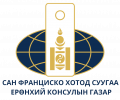A Brief History of Mongolia
2023-11-10
A Brief History of Mongolia
A large number of ethnicities have inhabited Mongolia since prehistoric times. Most of these people were nomads who, from time to time, formed confederations that rose to prominence. The first of these, the Xiongnu, were brought together by Modun Shanyu to form a confederation in 209 BC. In 1206, Chinggis Khan (Genghis Khan) founded the Mongol Empire, the largest empire in history. The Mongol Empire’s territory extended from present-day Poland in the west to the Korean peninsula in the east, from Siberia in the north to the Arab peninsula, and Vietnam in the south, covering approximately 33 million square kilometers. 1227, after Chinggis Khan’s death, the Mongol Empire was subdivided into four kingdoms. In 1260, Chinggis Khan’s grandson, Kublai Khan, ascended the throne of one of the four kingdoms encompassing present-day Mongolia and China. In 1271, Kublai Khan formally established the Yuan Dynasty. The Yuan Dynasty was the first foreign dynasty to rule all of China until it was overthrown by the Chinese Ming Dynasty in 1368.
The Mongol court returned to its native land. However, centuries of internal conflict, expansion, and contraction made them fall into the Manchu Qing dynasty. They conquered Inner Mongolia in 1636. Outer Mongolia was submitted in 1691. For the next two hundred years Mongolia was ruled by the Qing Dynasty until 1911. Mongolia declared independence in 1911 under the Bogd Khan, the spiritual leader of Mongolia’s Tibetan Buddhism. However, the Chinese government still considered “Outer Mongolia” part of it and invaded the country in 1919.
In 1921, the People’s Revolution won in Mongolia with the Russian Red Army's help; thus, Mongolia became the second socialist country in the world. After Bogd Khan died in 1924, the Mongolian People’s Republic was proclaimed, and the first Constitution was adopted.
Mongolia was under a Soviet-dominated Communist regime for almost 70 years, from 1921 to 1990. In the fall of 1989 and the spring of 1990, new political thought began to emerge in Mongolia, inspired by the glasnost and perestroika in the Soviet Union and the collapse of the Communist regimes in Eastern Europe. In March 1990, a democratic revolution that started with hunger strikes to overthrow the Government led to the peaceful renouncement of communism. Mongolia’s renouncement of communism led to a multi-party system, a new constitution, and a transition to a market economy.
Over the past two decades, Mongolia has transformed itself from a socialist country with a planned economy into a vibrant multi-party democracy with one of the world’s fastest-growing economies.
Mongolia is the world’s second-largest landlocked country, with a territory of 1.56 million square kilometers. It is located in Northern Asia, bordered by Russia in the north and China in the south, east, and west. Mongolia is the world’s least densely populated country, with a population of more than 2.9 million people living in a vast area of 1.56 million square kilometers. Ulaanbaatar is Mongolia’s capital and largest city, home to approximately 45% of the country’s population.
Ethnic Mongols comprise approximately 94.9% of the population, Kazakh 5%, and Turkic, Chinese, and Russians comprise the remaining population.
Buddhism is the major religion in Mongolia, and a small number of Muslims, Christians, and Shamans live there.
The official language is Mongolian and is spoken by 90% of the population. English is quickly replacing Russian as the most popular language, following Mongolian. Many Mongolians also speak Korean, Japanese, Chinese, German, and other Western European languages.
